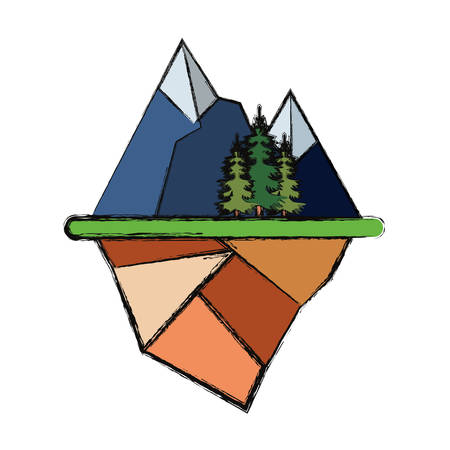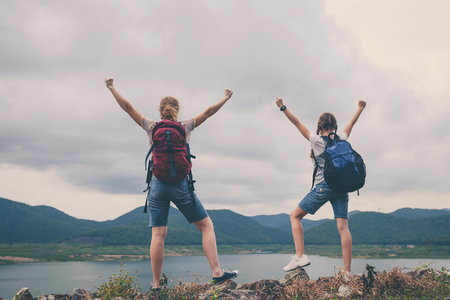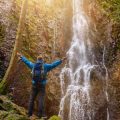Introduction to the Cascades and Hiking Culture in Washington
Washington’s Cascade Mountains are a true gem of the Pacific Northwest, stretching from the Canadian border all the way down to Oregon. This rugged range is home to iconic peaks like Mount Rainier, Mount Baker, and Glacier Peak, offering everything from lush old-growth forests to dramatic alpine vistas. The Cascades are not just about scenery—they’re a playground for outdoor lovers and one of the best destinations in the United States for day hiking adventures.
Why Hikers Love the Cascades
The diversity of landscapes in the Cascades is unmatched. In a single hike, you might pass through towering evergreens, wildflower-filled meadows, sparkling mountain lakes, and rocky ridgelines with panoramic views. With trails ranging from family-friendly strolls to challenging summit scrambles, there’s something here for everyone. The region’s mild summers and crisp autumns make hiking accessible most of the year, while winter brings its own magic for snowshoeing and backcountry exploration.
Snapshot: What Makes Washington Hiking Unique?
| Feature | Description |
|---|---|
| Diverse Terrain | Rainforests, alpine lakes, volcanic peaks, waterfalls |
| Wildlife Spotting | Chance to see deer, black bears, marmots, eagles |
| Accessible Trailheads | Many hikes within 1-2 hours of Seattle or Portland |
| PCT Access | Cascade section of the famous Pacific Crest Trail runs through Washington |
| Lush Wildflowers (Late Spring/Early Summer) | Blankets of lupine, paintbrush, beargrass on open slopes |
The Spirit of Outdoor Recreation in Washington
Washingtonians are passionate about their outdoor spaces—and it shows. Whether you’re a seasoned hiker or brand new to the trail scene, you’ll find a welcoming community that values stewardship and respect for nature. Locals take pride in “Leave No Trace” principles: pack out your trash, stay on designated paths to protect fragile plants, yield to uphill hikers, and keep noise levels low so everyone can enjoy the serenity.
Responsible Recreation: Quick Tips for Hiking in the Cascades
- Check trail conditions: Snow can linger into summer at higher elevations; always look up recent trip reports.
- Be prepared for weather changes: Layers are essential—the mountains can be unpredictable!
- Carry the 10 Essentials: Map/compass (or GPS), water, food, extra clothing, headlamp, first-aid kit, sun protection, knife/tool, fire starter, emergency shelter.
- Respect wildlife: Observe from a distance and never feed animals.
- Support local communities: Many small towns near trailheads offer great coffee shops and bakeries—perfect for a post-hike treat!
Your Adventure Begins Here!
If you’re ready to explore some of America’s most stunning day hikes surrounded by breathtaking scenery and vibrant hiking culture, Washington’s Cascades will not disappoint. In this guide series, we’ll highlight the top 15 day hikes—from classic must-do routes to hidden local favorites—so you can plan your perfect Pacific Northwest adventure.
2. Planning Your Day Hike: Essentials and Safety Tips
Gear Up for the Cascades: Must-Have Day Hiking Essentials
The Cascade Mountains are famous for their breathtaking views, rugged terrain, and rapidly changing weather. Packing the right gear is key to a safe and enjoyable hike. Here’s a quick checklist of essentials every hiker should bring:
| Essential Item | Why You Need It |
|---|---|
| Navigation Tools (Map, Compass, GPS) | Trails can be confusing—don’t rely only on your phone’s battery. |
| Water (and Filter or Purification Tablets) | Stay hydrated; mountain streams aren’t always safe to drink from directly. |
| High-Energy Snacks | Fuel your adventure with nuts, bars, jerky, or dried fruit. |
| Weather-Appropriate Clothing | Layer up! Conditions can change fast in the Cascades. |
| Rain Gear and Extra Socks | Mist, rain, and stream crossings are common even in summer. |
| First Aid Kit | Treat blisters, scrapes, or unexpected mishaps on the trail. |
| Emergency Blanket or Bivy Sack | A must-have if you get caught out overnight by accident. |
| Headlamp/Flashlight (with extra batteries) | If your hike takes longer than planned, you’ll need light after sunset. |
| Sunscreen & Insect Repellent | The sun is stronger at higher altitudes; bugs are plentiful near lakes and forests. |
| Multi-tool or Knife | Handy for gear fixes, food prep, and emergencies. |
| Whistle | For signaling in case of emergency—three blasts means help! |
Safety Guidelines for Hiking in Washington’s Cascades
- Let Someone Know Your Plans: Share your route and expected return time with a friend or family member. Cell service is spotty in the mountains.
- Check Trail Conditions: Visit the Washington Trails Association (WTA) website for up-to-date reports on trail closures, snowpack, and hazards before you go.
- Pace Yourself: Many Cascade trails gain elevation quickly. Take regular breaks, drink water often, and listen to your body.
- Avoid Solo Hiking: If possible, hike with a buddy—especially on less popular trails or outside peak season.
- Wildlife Awareness: Black bears are common. Make noise while hiking, keep food sealed tight, and know what to do if you encounter wildlife.
The Leave No Trace Principles: Protecting the Cascades Together
The beauty of the Cascades depends on responsible hikers. Follow these Leave No Trace principles to keep the trails pristine for everyone:
- Plan Ahead and Prepare: Research your hike and know what to expect. Pack out everything you pack in—including trash, food scraps, and toilet paper.
- Travel and Camp on Durable Surfaces: Stay on established trails. Shortcutting switchbacks causes erosion.
- Dispose of Waste Properly: Use restrooms where available; otherwise bury human waste 6-8 inches deep at least 200 feet from water sources.
- Leave What You Find: Don’t pick flowers or take rocks. Let others enjoy nature’s treasures too.
- Minimize Campfire Impact: Most day hikes don’t need campfires. If you must have one, use established rings and put it out completely.
- Respect Wildlife: Observe animals from a distance—never feed them or leave food behind.
- Be Considerate of Others: Yield to uphill hikers, keep noise down, and greet fellow hikers with a friendly “hello.”
Navigating Mountain Weather: Be Prepared for Anything
Cascade weather can turn on a dime. Even sunny forecasts can shift to rain or snow within hours. Here’s how to stay ready:
- Dress in Layers: Start with moisture-wicking base layers, add an insulating layer (like fleece), and top it off with a waterproof shell.
- Packing Tip: Always bring a rain jacket—even in July or August! An extra pair of socks can make all the difference if your feet get wet crossing streams or snowfields.
- If Thunderstorms Roll In: Descend from exposed ridges immediately. Lightning is no joke at higher elevations!
Your Adventure Awaits!
A successful day hike in Washington’s Cascade Mountains starts with good planning. With the right gear, safety habits, respect for nature, and flexible preparation for unpredictable weather, you’re set to experience some of America’s most spectacular trails—one step at a time.

3. Top 15 Must-Do Day Hikes in the Cascade Mountains
Ready to lace up your boots and hit the trails? Washington’s Cascade Mountains offer some of the best day hikes in the country, with everything from wildflower meadows to jaw-dropping alpine lakes. Whether you’re a seasoned hiker or just looking for a fun weekend adventure, these fifteen hikes capture the heart and beauty of the Cascades. Each hike below features key highlights, trail difficulty, and tips shared by local hikers so you can make the most out of your next trip.
Trail Overview Table
| Trail Name | Distance (Round Trip) | Elevation Gain | Difficulty | Highlights |
|---|---|---|---|---|
| Rattlesnake Ledge | 4 miles | 1,160 ft | Moderate | Stunning cliff views over Rattlesnake Lake; quick access from Seattle |
| Snoqualmie Mountain | 6 miles | 3,200 ft | Difficult | Breathtaking summit panoramas; challenge for experienced hikers |
| Mount Si | 8 miles | 3,150 ft | Difficult | Classic Seattle area peak; sweeping valley and city views |
| Lakes Trail at Mount Rainier (Paradise) | 5.4 miles | 1,300 ft | Moderate | Wildflowers in summer; epic views of Rainier and surrounding peaks |
| Kendall Katwalk | 12 miles | 2,600 ft | Difficult | Narrow cliffside trail; North Cascades vistas; Pacific Crest Trail section |
| Sourdough Mountain Lookout | 10.4 miles | 5,000 ft | Difficult | Historic fire lookout; incredible lake and mountain scenery |
| The Enchantments (Colchuck Lake) | 8 miles | 2,300 ft | Difficult | Turquoise alpine lake; granite spires; wilderness vibes near Leavenworth |
| Myrtle Falls & Skyline Loop (Mount Rainier) | 5.5 miles (Skyline Loop) | 1,450 ft (Skyline Loop) | Moderate to Difficult (Skyline Loop) | Cascading falls; glacier views; wildlife sightings like marmots and deer |
| Twin Falls Trail (North Bend) | 3.6 miles | 500 ft | Easy to Moderate | Lush old growth forest; impressive waterfalls along the route |
| Boulder River Trail | 8.6 miles | 700 ft | Moderate | Mossy rainforest atmosphere; several waterfalls and creek crossings |
| Sahale Arm Trail (North Cascades) | 12 miles | 3,800 ft | Difficult | Marmot sightings; wildflower-filled meadows; epic mountain vistas |
| Poo Poo Point (via Chirico Trail) | 7.2 miles | 1,858 ft | Moderate to Difficult | A favorite for paragliders; great views of Issaquah and Mt. Rainier on clear days |
| Ladder Creek Falls & Gardens (Newhalem) | .5 mile | <100 ft | Easy | Lush gardens lit up at night; family-friendly and accessible strolls |
| Maple Pass Loop | 7 . 2 miles | 2 , 000 ft | Moderate to Difficult | Spectacular autumn colors ; panoramic mountain scenery year – round |
| Snow Lake Trail | 7 . 2 miles | 1 , 800 ft | Moderate | Classic alpine lake ; swim spots in summer ; gorgeous wildflowers |
Local Tips for Hiking the Cascades
- Start Early : Parking lots fill up quickly , especially on weekends . Arriving before 8 am is recommended .
- Check Trail Conditions : The weather changes fast in the mountains . Always check trail reports for snow , mud , or closures .
- Pack Essentials : Even short hikes can become challenging . Bring water , snacks , layers , map , and first aid kit .
- Leave No Trace : Help protect these wild places by packing out all trash and staying on marked trails .
- Respect Wildlife : Keep a safe distance from animals — marmots , bears , and goats are common sights .
What Makes These Hikes Special ?
From lush rainforests to rugged alpine ridges , Washington’s Cascade Mountains pack an amazing variety of scenery into each trail . Local hikers love these routes for their accessibility , natural beauty , and the unbeatable sense of accomplishment after reaching that final viewpoint or crystal – clear lake . Whether you’re chasing waterfalls or summiting rocky peaks , there’s a perfect day hike here for every outdoor enthusiast .
4. Wildlife, Flora, and Seasonal Considerations
One of the best parts about hiking in Washingtons Cascade Mountains is experiencing the incredible variety of wildlife and native plants that call this region home. Whether you’re trekking through lush forests or up rocky ridges, you’re surrounded by natural beauty and living things unique to the Pacific Northwest.
Wildlife You Might Encounter
The Cascades are teeming with animal life. On your hikes, keep an eye out for:
- Black bears – Usually shy, but always respect their space and keep food stored properly.
- Mule deer and elk – Common in meadows and forest edges.
- Pikas and marmots – Listen for their squeaks among alpine rocks.
- Bald eagles and ospreys – Often seen soaring above lakes and rivers.
- Western tanagers, Steller’s jays, and varied thrushes – Brightly colored birds frequenting wooded areas.
Native Plants to Look For
The Cascades host a wide array of native flora. Depending on the elevation and season, here are some highlights:
| Plant Name | Description | Best Time to See |
|---|---|---|
| Pacific Rhododendron | Washington’s state flower; large pink blooms brighten trailsides. | Late spring to early summer |
| Beargrass | Tall stalks with creamy white flowers, common in open meadows. | June–July |
| Huckleberry bushes | Berries attract both hikers and wildlife; tasty for trail snacks. | Mid to late summer |
| Doulas fir & western hemlock | Towering evergreens that form much of the lowland forest canopy. | Year-round |
| Lupine & Indian paintbrush | Colorful wildflowers carpeting subalpine slopes. | Summer months |
Seasonal Trail Conditions and Best Times to Hike
The Cascade Mountains offer something different every season. Here’s what you can expect throughout the year:
| Season | Trail Conditions | Highlights/Considerations |
|---|---|---|
| Spring (April–June) | Melted snow at lower elevations; higher trails may still be snow-covered or muddy. | Waterfalls are full; wildflowers start blooming; pack waterproof boots. |
| Summer (July–September) | Most trails are dry and accessible; some high passes may have lingering snow into July. | Prime time for wildflowers, huckleberries, and panoramic views; busiest season on popular trails. |
| Fall (October–November) | Crisp air; possible early snowfall at higher elevations; beautiful autumn foliage. | Cooler temperatures make for comfortable hiking; fewer crowds; watch out for slippery leaves or frost. |
| Winter (December–March) | Ski/snowshoe conditions above 2,000 feet; most trails covered in deep snow. | Avalanche danger increases off-trail; only experienced winter hikers should venture far from trailheads. |
Packing Tips for Changing Conditions
- Packing layers is key — weather changes fast in the mountains!
- If hiking during shoulder seasons (spring/fall), bring microspikes or trekking poles for extra stability on slick trails.
- No matter the season, always check local trail reports before heading out for updates on closures or hazards.
Your Adventure Awaits!
No matter which trail you choose from our Top 15 list, being aware of the local wildlife, appreciating the native plants, and planning around seasonal changes will help you get the most out of your day hike in Washington’s stunning Cascade Mountains.
5. Local Resources: Trailheads, Permits, and Community Connections
Exploring the Cascade Mountains is all about being prepared and knowing where to start your adventure. Here’s how you can easily find trailheads, understand permit requirements, and plug into the local hiking scene in Washington State.
Finding Trailheads: Your Gateway to Adventure
Most trailheads for the top day hikes in the Cascades are conveniently located within a couple of hours from major cities like Seattle or Tacoma. Many popular trailheads have parking lots, but they can fill up quickly, especially on weekends and holidays. Always check if there are overflow areas or shuttle services available.
| Trail Name | Nearest Trailhead | Parking Info |
|---|---|---|
| Mount Si | Mount Si Trailhead | Large lot, fills by 8am weekends |
| Rattlesnake Ledge | Rattlesnake Lake Recreation Area | Ample parking; busy year-round |
| Snoqualmie Mountain | Snoqualmie Pass Trailhead | Limited parking; arrive early |
| Lake Serene/Bridal Veil Falls | Lake Serene Trailhead | Overflow lot available nearby |
Pro Tip:
If you’re new to the area, apps like AllTrails and Washington Trails Association (WTA) are great for directions and real-time parking updates.
Permits: What You Need to Know Before You Go
Many Cascade hikes require a pass or permit, especially those managed by federal agencies or state parks. Here’s a quick rundown:
| Permit Type | Covers | Where to Get It |
|---|---|---|
| Northwest Forest Pass | US Forest Service trailheads and parking lots | Online, REI stores, ranger stations |
| Discover Pass | Washington State Parks & DNR lands | Online, local retailers, kiosks at parks |
| Special Permits (e.g., Enchantments) | Certain high-traffic wilderness zones (often via lottery) | Recreation.gov; plan months ahead! |
Packing Essentials:
- Your printed or digital pass displayed on your dashboard.
- ID matching your permit if required for entry lotteries.
- A backup payment option—some trailheads sell day passes onsite.
Tapping Into the Pacific Northwest Hiking Community
The hiking community in Washington is friendly, supportive, and always ready to share tips. Here’s how to get connected:
- Washington Trails Association (WTA): The go-to resource for trip reports, gear swaps, and volunteer trail work days.
- PCT Washington Facebook Groups: A great way to ask questions or find hiking buddies for popular routes like Snow Lake or Mailbox Peak.
- Local Outdoor Stores: Shops like REI often host free map-reading classes and group hikes that are perfect for beginners.
- “Leave No Trace” Meetups: Lend a hand at stewardship events—plus, it’s a chance to make new friends who care about the mountains as much as you do!
Your Next Steps:
Check current trail conditions online before heading out, carry the right permit for your hike, and don’t hesitate to introduce yourself on the trail—Pacific Northwesterners love sharing their favorite spots! With these resources at your fingertips, you’re set for memorable adventures in the Cascades.

